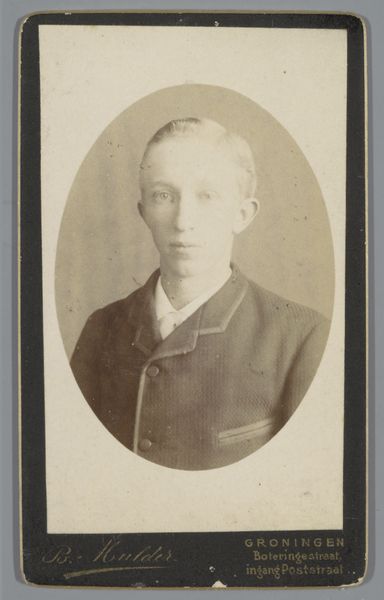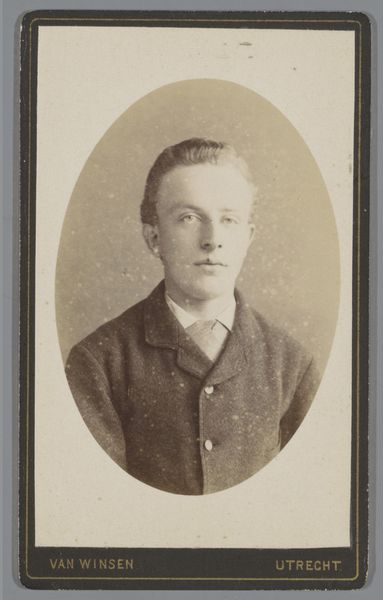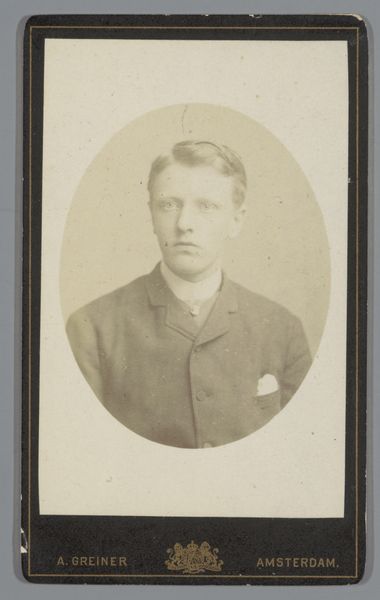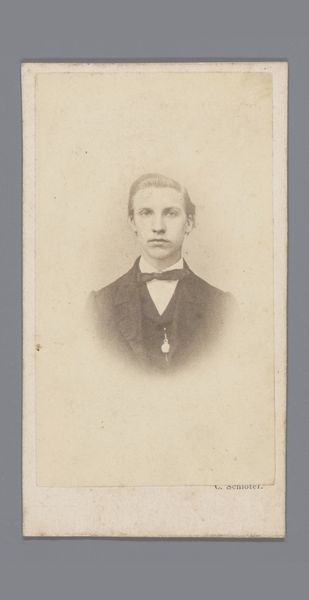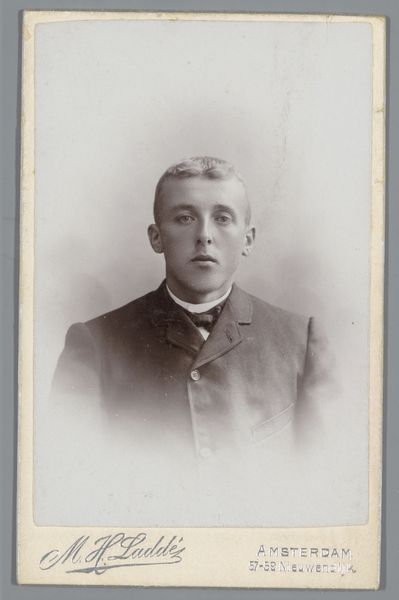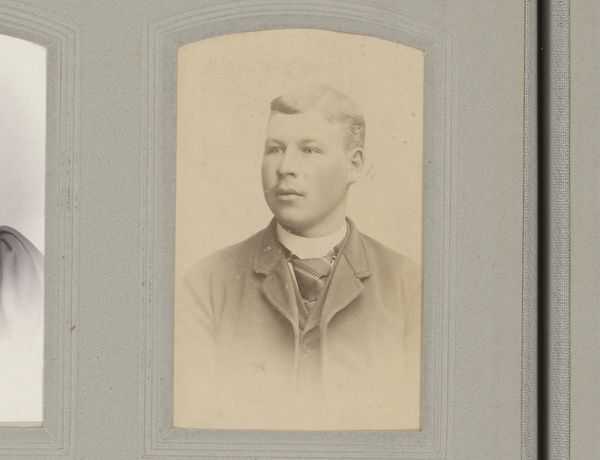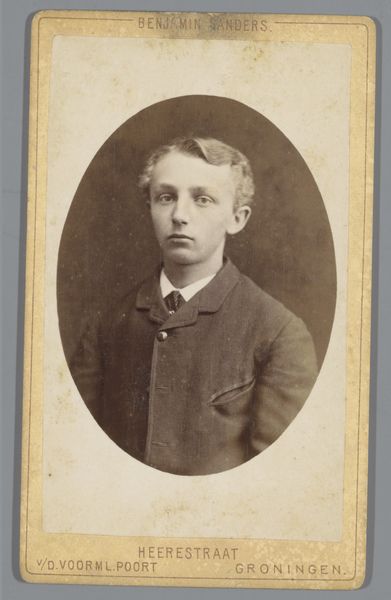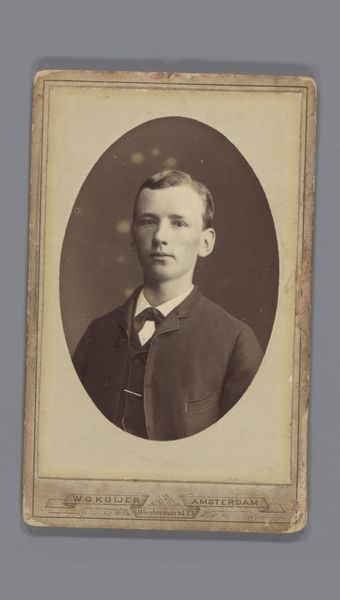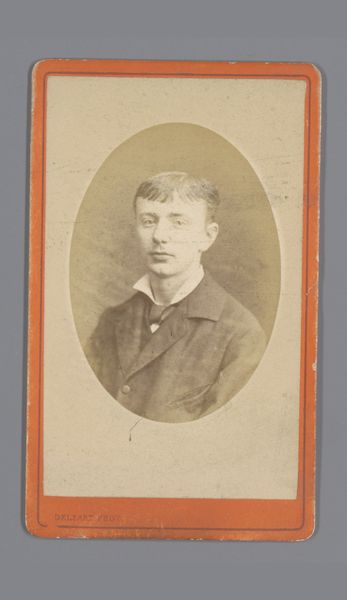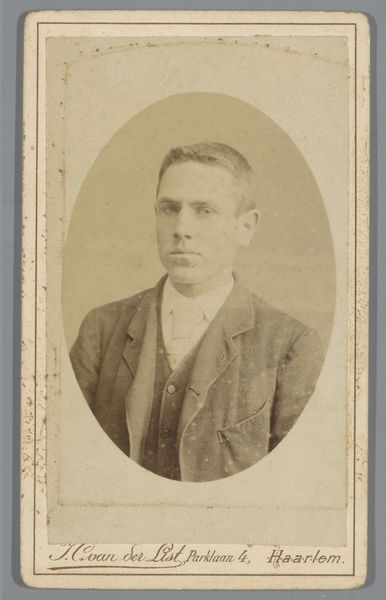
photography, gelatin-silver-print
#
portrait
#
photography
#
gelatin-silver-print
#
realism
Dimensions: height 105 mm, width 64 mm
Copyright: Rijks Museum: Open Domain
Editor: This is a photograph from between 1884 and 1896, titled "Portret van Hiepko Boerma," created by Friedrich Julius von Kolkow. It’s a gelatin-silver print. It’s a formal portrait, but his slightly furrowed brow suggests some worry. What can you tell me about what you see here? Curator: I see the echoes of cultural memory embedded in the composition. The oval format, the subject’s attire, and the somber tone collectively evoke the visual language of mourning. The photograph transcends mere representation; it becomes a vessel carrying the weight of loss. The image prompts me to ask, what traditions or societal conventions related to remembrance and identity were at play during this time? Editor: Mourning? That's interesting. I was just focusing on the person and how they were presented. The oval-shaped frame within the print and the tight crop create an intimate feel, though his expression feels so distant. Curator: The distancing you perceive can also be read through the lens of self-presentation. Do you think there is an intent, on his part, or perhaps on the photographer’s part, to project a particular image? Perhaps that of quiet resilience or perhaps intellectual seriousness given that it’s a time when new disciplines and academic frameworks are solidifying. This distancing isn’t just photographic, but culturally performed. It is his attempt to communicate identity within very specific parameters, and that says a lot. Editor: I see what you mean. So, it's not just about him but about how he and the photographer chose to present him within the visual vocabulary available to them at that time. I never thought about it that deeply. Thanks! Curator: Precisely. Images speak a thousand words because those words have been accumulating meanings for centuries, giving them a particular resonance in any era. Understanding that provides a new depth of context.
Comments
No comments
Be the first to comment and join the conversation on the ultimate creative platform.

